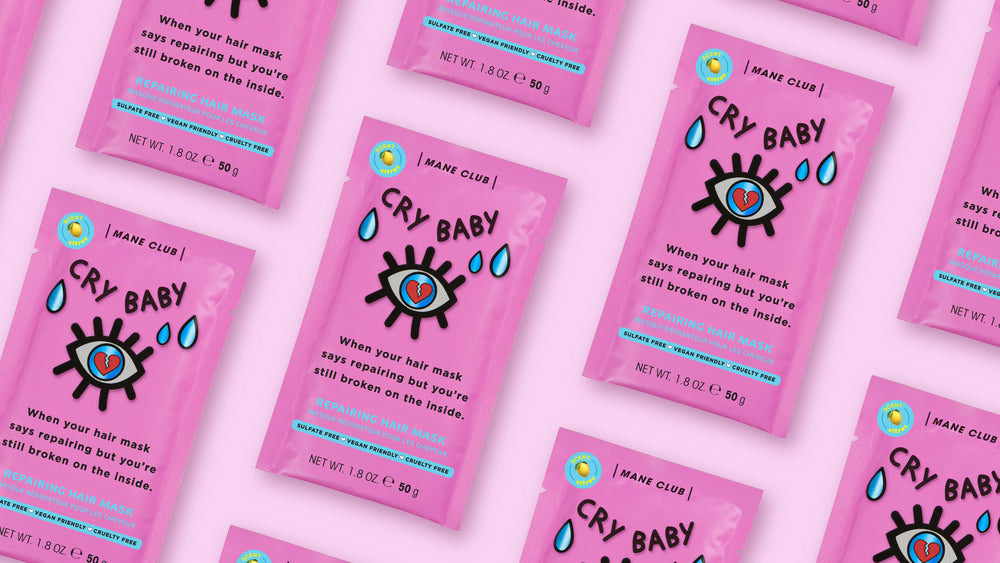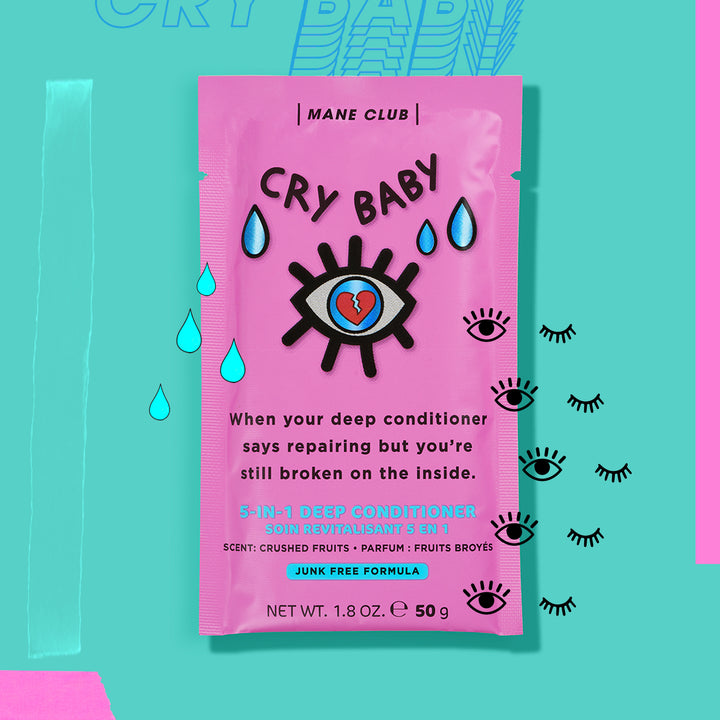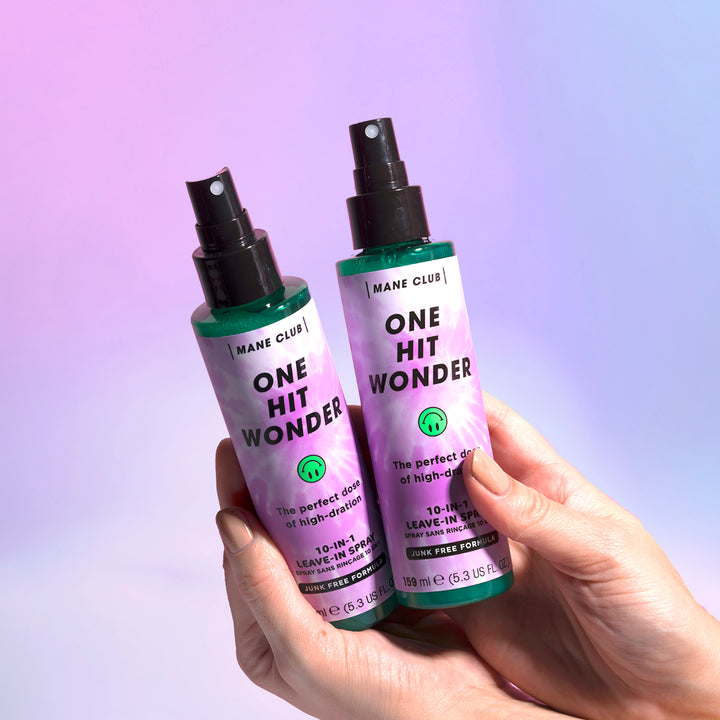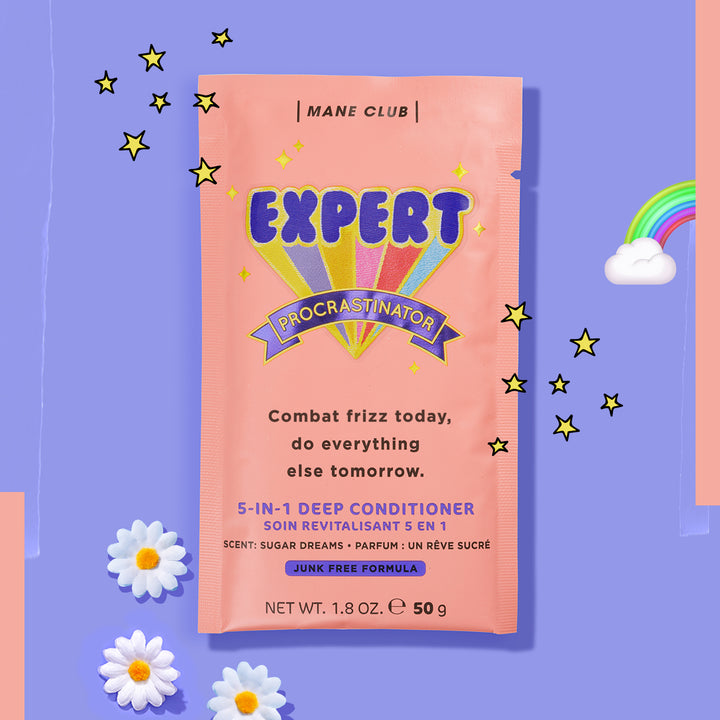What Causes Split Ends and How You Can Prevent Them
We all deal with split ends but have you ever wondered what causes them? From heat to chemical to environmental damage, your hair's tips can splay out easily into two or more pieces. Yikes!
What are split ends?
As the name suggests, split ends are exactly what they sound like. They occur when the hair fiber gets frayed or split, usually at the ends of the hair but sometimes further up. Split ends can affect all hair types, regardless of genetics or ethnicity.
It's easy to eliminate split ends by cutting them off, but knowing why they started is also essential.
What causes split ends?
Split ends can vary widely depending on how you style your hair, what products you use, and if you use heated tools. In addition to the heat and chemical damage, split ends can also occur due to damage caused by the weather, pollution, and your lifestyle.
Hair products and frequent chemical treatments like dye, bleach, and perms can also cause split ends. But most often, they occur when hair is exposed to extreme weather conditions, straightened, or curled.

1. Heat styling
The heat you apply to your hair when you straighten, curl, or blow-dry it can damage its cuticle over time, leading to split ends. You’re quite literally frying your hair without heat-protecting products!
2. Chemical and color treatments
Hair coloring, bleaching, relaxers, or perms are common sources of chemical damage that can wear away your hair's cuticle and cause your hair to split. If you go for these types of treatments often, you probably have experience with split ends. Sorry, my dear!
3. Towel drying & friction
There are many materials and fabrics that can lead to split ends. These include hats, scarves, pillowcases, and rough towels.
Split ends are also often caused by mechanical damage to the hair shaft, like brushing your hair roughly, which tears the strands, making them brittle and prone to splitting.
4. UV rays & environment
Even though we hesitate to include things like going outside on the list of how our hair gets damaged, our environment is a big part of it. Hair can become brittle and weak from excessive sun exposure and even form split ends from UV ray damage. Pollution and free radicals damage our hair daily.
5. Lack of humidity
Damaged hair is often caused by lack of moisture; thirsty, dry hair is not only an ideal environment for split ends but can also cause weak, brittle hair that is prone to breaking.
If you think your hair isn't growing or is growing too slowly, in reality, parts of it are likely snapping off due to lack of moisture.
6. Drying hair products & over-washing
Many hair products contain drying agents and alcohol, so you might get split ends if you wash your hair too often or use products that dry your hair. Additionally, if you wash your hair frequently, you can wash away your scalp's natural oils, leaving your hair overly dry and susceptible to damage and split ends.
How can you prevent split ends?
If you catch your split ends during their "small" or beginning phase, you can repair them using hair masks and moisturizing/nourishing products.
Sadly, once the hair has split, you cannot restore it; you can only remove them by cutting them off. All we can do is pour one out for all the inches we’ve lost to split ends.
Here's how you can prevent split ends from happening in the first place.
1. Regular hair trims
If you have long strands and want to maintain their length, trimming every 6-8 weeks will help eliminate split ends. Anywhere from 1/2 inch to 1 inch is a good starting point.
Furthermore, trimming split ends helps prevent further damage if your hair is already split. When split ends aren't trimmed in time, the hair shaft will continue to split, requiring you to chop more off.
2. Use heat protectants or heat less often
The heat from straighteners, hairdryers, curling irons, and hot rollers can damage your hair. These tools strip your hair of moisture and cause it to split and break.
Whenever possible, use medium or low heat for styling your hair. Use a heat protectant before curling, straightening, or blow-drying your hair to keep it healthy and lustrous.
One Hit Wonder 10-in-1 Leave-In Spray is a great leave-in conditioner that acts as a heat protectant and a detangler to prevent split ends. It uses cannabis Sativa seed oil to seal in moisture and glycerin to pull in additional moisture from the air to reduce breakage and smooth frizz.
3. Use a hair mask
If you color-treated your hair or do a lot of heat styling, it is essential to give it much-needed moisture and hydration. Try the super moisturizing (and exceptionally convenient!) Cry Baby Repairing Hair Mask.
4. Use a leave-in conditioner to detangle hair
When you comb through your hair roughly, you can tear through the strands, causing your hair to become brittle and split. It is possible to prevent split ends with a leave-in conditioner as long as it contains nourishing and moisturizing ingredients for the hair.
5. Air dry hair
While we all love a good blowout now and then, overdoing it can result in some breakage. Keep your blowdryer under control, tiger!
If your hair tends to frizz when air-dried, use a leave-in conditioner to minimize knots and friction on the strands.
6. Use a gentle, non-drying shampoo
Our hair needs to be kept clean and healthy, but excessive washing can lead to drier, rougher ends due to losing its natural oils. Using a sulfate-free shampoo maintains the scalp and hair's natural oils, which leaves them more hydrated.
Types of split ends
Considering there are many ways your hair can split, it's essential to understand what damage to watch out for.
Discover the types of split ends and learn what you can do to stop them.

1. Small Split Ends
As with Y Splits, the small split ends of your hair are common and represent early signs of split development. When the tip separates in half, it resembles a tiny fishtail but barely split.
2. Incomplete Split Ends
There can be split ends when the hair strand weakens but doesn't completely split, creating the appearance of an eye of a needle. It’s on its way to splitting but hasn’t gotten there yet.
3. Y Split
This type of split end is ubiquitous and easy to identify. The Y Split is when your strand of hair splits evenly into two parts, forming a Y-shape. This is probably the most common type of split end.
4. Taper Split
Taper split ends aren't exactly complete split ends, but they can indicate that you need to cut your hair. If your hair becomes extremely thin towards the ends, it's time for a trim.
5. Feather Split
Your hair ends have split multiple times, resembling feathers or a bunch of frizz. This shows that your cuticle can no longer hold the hair together, and it is time for a trim.
6. Tree Split
In this case, the hair ends have split multiple times, resembling a tree branch. This also means it's time for a trim.
Overview
Split ends are common; everyone experiences them at some point in life… but that doesn’t mean we have to tolerate them! Split ends can negatively impact your hair's appearance and, if left untreated, may even result in long-term damage.
If you're unsure whether you have split ends or if your hair feels dry, dull, lifeless, or on the verge of splitting, read this article on how to tell if your hair is damaged.
If you are concerned about split ends, prevention is critical. As many factors contribute to split ends, such as chemicals, heat, or environmental factors, we should always act in our hair's best interest.
Hair breakage is preventable if you use fewer styling tools and condition your hair correctly. Make sure your hair gets enough moisture and use a leave-in conditioner; a hair mask can also help.










